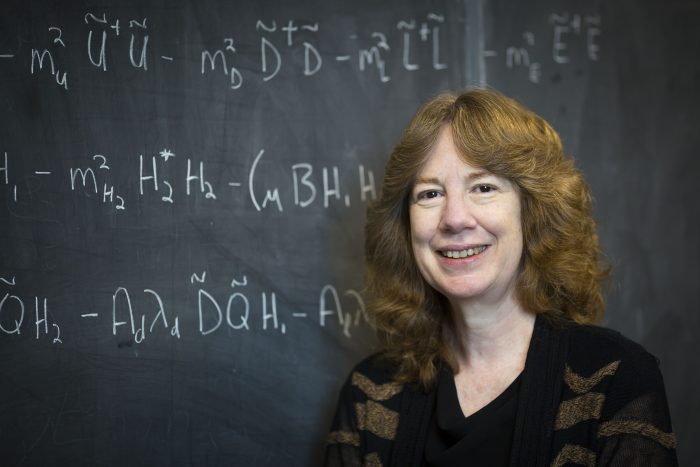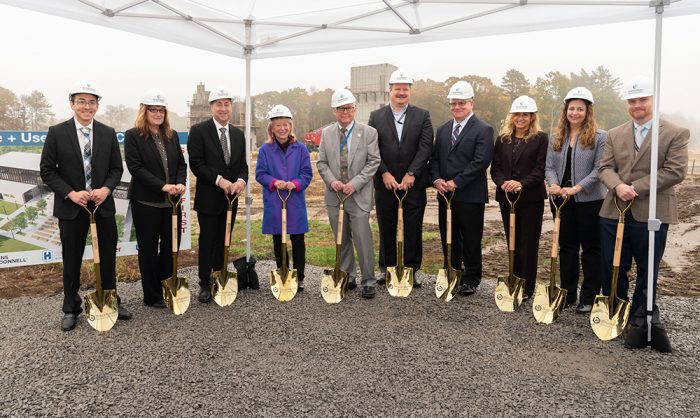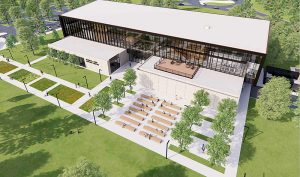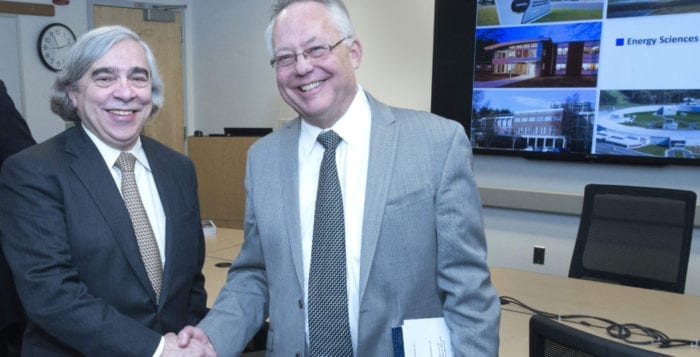For the first time in its over 75-year history, Brookhaven National Laboratory named its first female lab director.
JoAnne Hewett, associate lab director for fundamental physics and chief research officer at SLAC National Accelerator Laboratory in Menlo Park, California, will take over the top job at BNL this summer.
Hewett will also join Stony Brook University as a tenured faculty member in the Department of Physics and Astronomy and the C.N. Yang Institute for Theoretical Physics.
Hewett “is not only incredibly qualified and talented, but will also make history as the first woman to serve in this critical role,” Gov. Kathy Hochul (D), who is the first woman elected governor of the Empire State, said in a statement. “The lab has developed innovative ways to deliver on New York’s top priorities, from battling disease to acting on climate change, that are making a difference today and for the future of New York.”
Hewett, who was the first woman member at SLAC in 1994, conducts research as a theoretical physicist, exploring the fundamental nature of space, matter and energy. Her work in physics focuses on efforts beyond the Standard Model of particle physics.
Stony Brook University Distinguished Professor and Director of the C.N. Yang Institute for Theoretical Physics George Sterman described her hire as a “wonderful turn of events.”
In an email, Sterman wrote that her work “as a theoretical physicist has earned wide admiration, and her leadership has helped shape the national program in fundamental particles.”
Sterman suggested Hewett’s research “continues to influence experiments worldwide, and her perspectives will be greatly valued by her new colleagues at Stony Brook.”
With over 2,800 scientists, engineers, technicians and professionals and an annual budget of about $700 million, the researchers at BNL tap into the site’s state-of-the-art technology, including the National Synchrotron Lightsource II. These researchers, and the many scientists from around the country and the world, work in fields including nuclear and high energy physics, clean energy and climate science, quantum computing, artificial intelligence, photon sciences, isotope production, accelerator science and technology and national security.
Hewett is coming to BNL as it prepares to begin construction on the Electron-Ion Collider, or EIC. Estimated to cost between $1.7 billion and $2.8 billion, the EIC will allow researchers to look inside the nucleus at the protons and neutrons. The research will reveal the arrangement of quarks and gluons that make up the protons and neutrons of nuclei.
Discoveries from the EIC could lead to future technologies.
“I am head-over-heels excited to build the EIC in partnership with Jefferson Lab to unlock the mysteries of the force that binds Nature’s building blocks, to strengthen connections to industry and the community with Discovery Park, and to advance the multi-program missions of the lab,” Hewett said in a statement. “And I’m very much looking forward to working with everyone at Brookhaven, Stony Brook and the DOE to usher the lab into its next successful chapter.”
The lab is also building a new welcome center, the Science and User Support Group, which is the first building planned for Discovery Park.
Maurie McInnis, president of SBU and co-chair of the BSA Board of Directors, which is a partnership between SBU and Battelle, welcomed Hewett, who will start this summer, to BNL.
Hewett’s “capable leadership, experience and future-forward vision complements Brookhaven National Laboratory’s continued focus on scientific innovation and discovery,” McInnis said in a statement. “The University is pleased to bring her expertise to the Physics and Astronomy Department and to the C.N. Yang Institute of Theoretical Physics, both of which have had “long-standing and critical connections to many major physics achievements at BNL.”
The next few months
Hewett takes over the top job at the lab from Doon Gibbs, who had been in that position from 2013. Gibbs is retiring on April 17.
“I am grateful to [Gibbs] for his outstanding leadership of Brookhaven and his long legacy of building and strengthening the lab for advancing scientific discovery,” Hewett said in a statement.
Jack Anderson, BNL’s deputy director for operations, will serve as the interim lab director until Hewett joins the lab.
Tom Daniels, the current ALD for Facilities and Operations will serve as interim deputy director.








